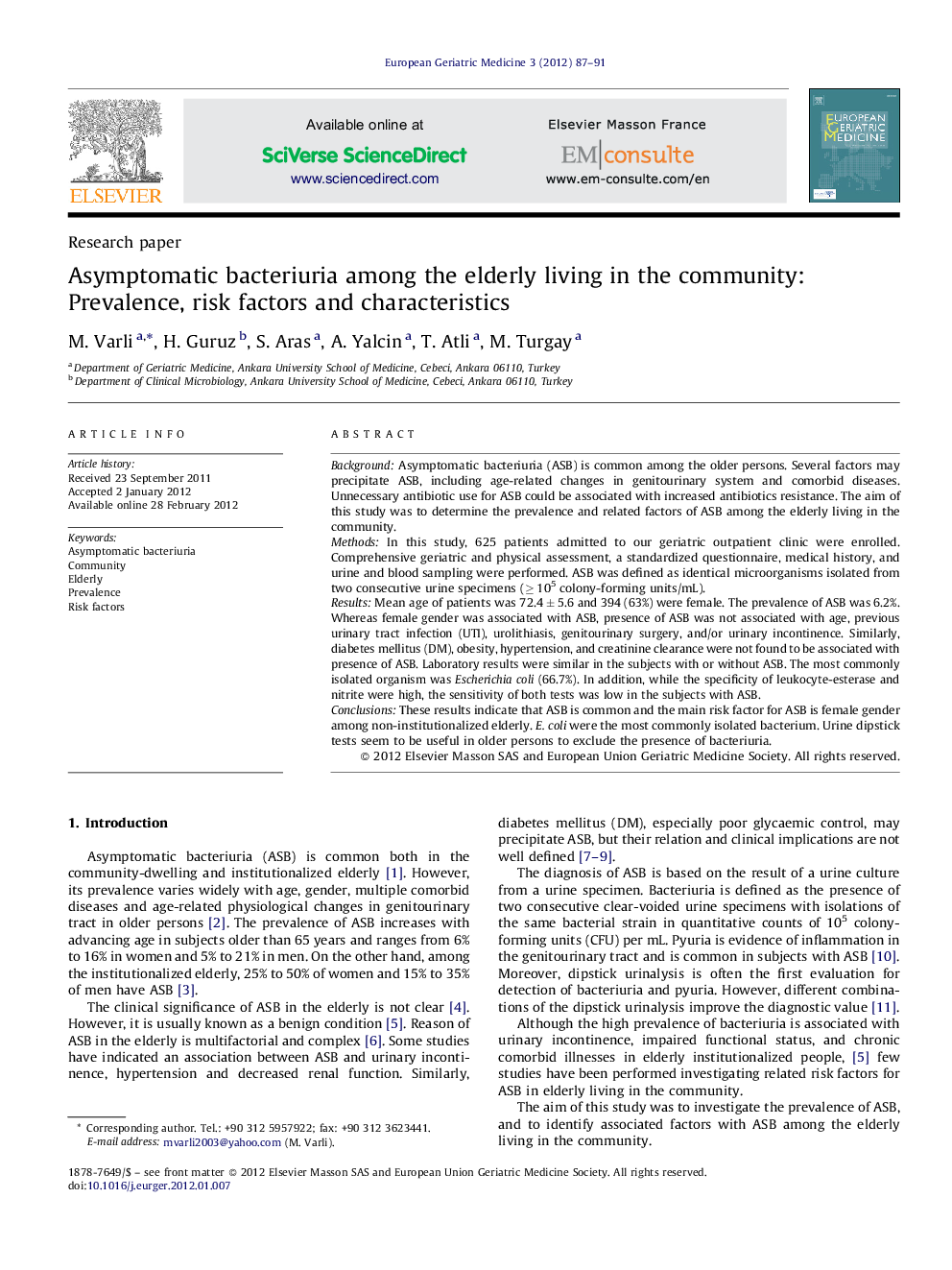| Article ID | Journal | Published Year | Pages | File Type |
|---|---|---|---|---|
| 3324554 | European Geriatric Medicine | 2012 | 5 Pages |
BackgroundAsymptomatic bacteriuria (ASB) is common among the older persons. Several factors may precipitate ASB, including age-related changes in genitourinary system and comorbid diseases. Unnecessary antibiotic use for ASB could be associated with increased antibiotics resistance. The aim of this study was to determine the prevalence and related factors of ASB among the elderly living in the community.MethodsIn this study, 625 patients admitted to our geriatric outpatient clinic were enrolled. Comprehensive geriatric and physical assessment, a standardized questionnaire, medical history, and urine and blood sampling were performed. ASB was defined as identical microorganisms isolated from two consecutive urine specimens (≥ 105 colony-forming units/mL).ResultsMean age of patients was 72.4 ± 5.6 and 394 (63%) were female. The prevalence of ASB was 6.2%. Whereas female gender was associated with ASB, presence of ASB was not associated with age, previous urinary tract infection (UTI), urolithiasis, genitourinary surgery, and/or urinary incontinence. Similarly, diabetes mellitus (DM), obesity, hypertension, and creatinine clearance were not found to be associated with presence of ASB. Laboratory results were similar in the subjects with or without ASB. The most commonly isolated organism was Escherichia coli (66.7%). In addition, while the specificity of leukocyte-esterase and nitrite were high, the sensitivity of both tests was low in the subjects with ASB.ConclusionsThese results indicate that ASB is common and the main risk factor for ASB is female gender among non-institutionalized elderly. E. coli were the most commonly isolated bacterium. Urine dipstick tests seem to be useful in older persons to exclude the presence of bacteriuria.
